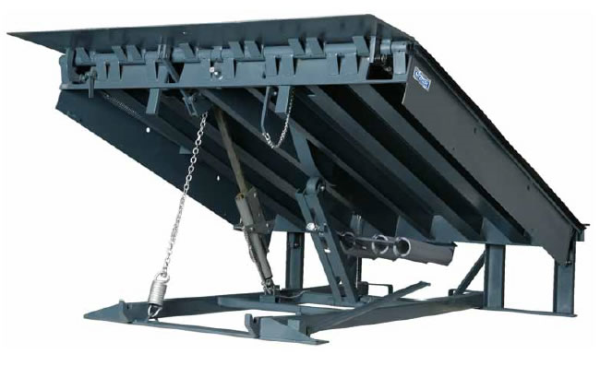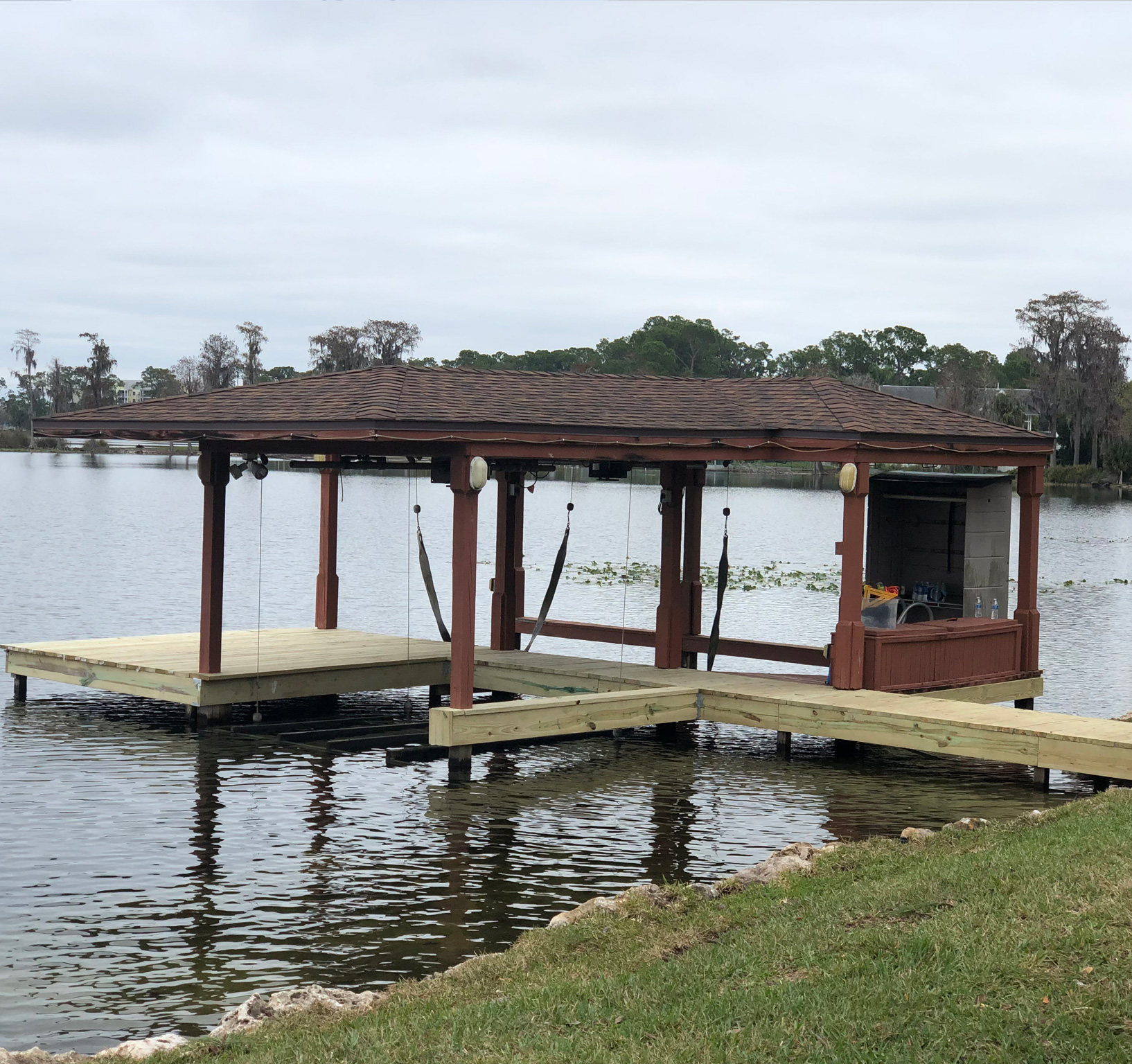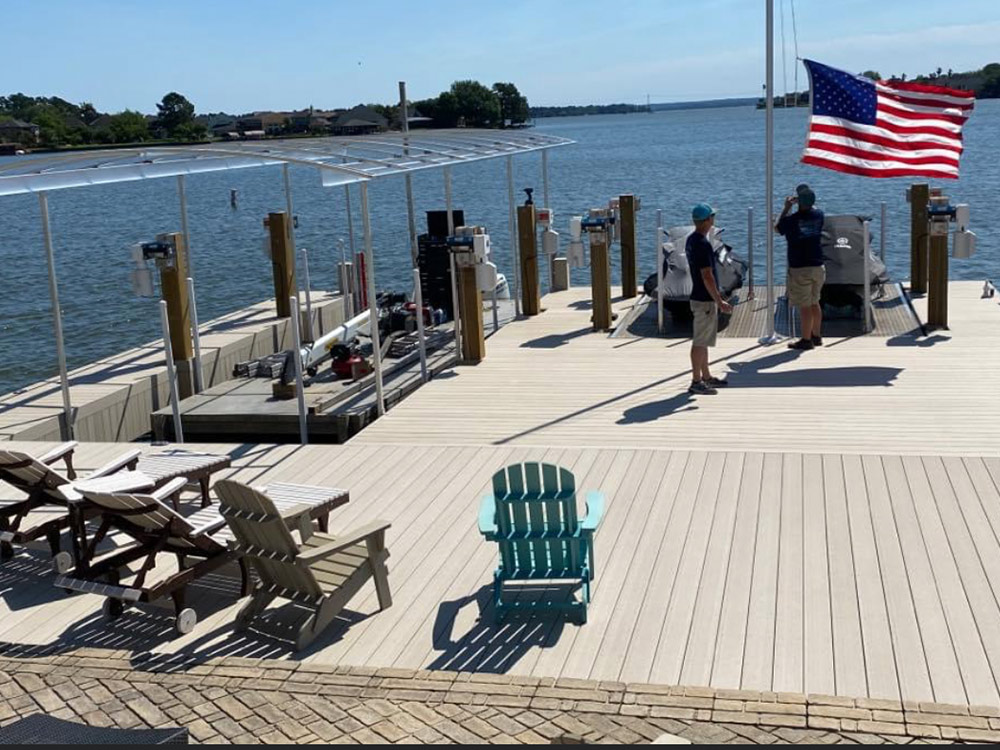Exactly How to Address Common Dock Repair Issues for Safe Water Activities

Identifying Common Dock Issues
Recognizing usual dock issues is crucial for maintaining the capability and security of your beachfront building. Routine assessments can aid uncover problems prior to they become extreme, ensuring both the longevity of the dock and the safety of those who utilize it. One widespread problem is loose or corroded fasteners. With time, screws, bolts, and other bolts can end up being loose because of continuous direct exposure to water and climate aspects, leading to architectural instability.
Another common trouble is the destruction of flotation tools. These devices are necessary for keeping the dock buoyant, and any kind of damage or punctures can cause the dock to checklist or sink. Frequently checking for leakages or water logged floats can preempt more considerable concerns.
In addition, algae and barnacle buildup on the dock's surface can develop unsafe and unsafe conditions. This biofouling not only poses a threat to customers but can also accelerate the deterioration of the dock materials.
Last but not least, examining for indications of rust on steel elements is necessary. Corrosion can compromise the integrity of the dock's framework, making it harmful. By routinely recognizing these usual dock concerns, you can make sure that your dock remains functional and safe and secure for several years to find.
Fixing Rotting Wood
When resolving the issue of deteriorating wood on your dock, it is important to act quickly to stop further damage. Begin by extensively evaluating the whole framework to recognize all impacted locations. Make use of a screwdriver to probe the timber; if it sinks in quickly, the wood is likely decomposed and requires instant interest.
Once determined, eliminate the decayed sections making use of a saw or chisel. Be sure to cut down to healthy, solid wood, ensuring you get rid of all jeopardized material. After elimination, deal with the staying timber with a timber chemical to avoid future rot. This treatment will assist protect versus moisture, which is the primary source of timber decay.
Following, change the gotten rid of areas with marine-grade lumber or pressure-treated timber, which are a lot more resistant to water damages. Safeguard the brand-new items with stainless-steel or galvanized bolts to avoid rust. Furthermore, using a water-proof sealer to the brand-new timber can offer an additional layer of protection.
Protecting Loosened Boards
Just how do you ensure your dock remains functional and risk-free for all its individuals? One vital element is protecting loose boards, which can otherwise position significant hazards. Loose boards not only boost the threat of stumbling but can additionally compromise the structural stability of the whole dock.

For reinstallation, use stainless or galvanized steel screws, as these products offer remarkable resistance to rust in aquatic environments. Make certain the screws are long sufficient to pass through deep right into the underlying assistance framework, however not as long that they extend via the dock's surface. Pre-drilling pilot openings can assist avoid the wood from splitting.
Lastly, keep a regular assessment timetable to recognize and deal with any type of new concerns quickly. By protecting loose boards efficiently, you add to the overall safety and longevity of your dock, making it a dependable system for water tasks.
Maintaining Unsteady Pilings
Making sure the stability of unstable pilings is extremely important to preserving a practical and safe dock. Use a degree to examine for vertical alignment and ensure they are driven deep sufficient into the substrate to provide appropriate support.
If the pilings are found to be unstable, one reliable technique for support is the use of extra supporting. Cross-bracing with treated lumber or galvanized steel can dramatically improve stability. Anchor the braces securely to both the pilings and the dock structure to distribute loads uniformly.

Routine upkeep and regular review of the pilings' security are important to making sure long-lasting dock safety and capability.
Replacing Rusty Hardware
Attending to unstable pilings is simply one aspect of keeping a dock's stability; another critical worry is changing rusty equipment. In time, direct exposure to dampness and salt can result in the oxidation and deterioration of brackets, screws, and screws, compromising the whole structure's security. Routine evaluation for corrosion is essential, particularly after extreme weather condition or seasonal modifications.
When rustic hardware is determined, instant activity is required. Begin by selecting marine-grade stainless-steel or galvanized hardware, both designed to resist the rough aquatic environment. Make certain that my website you have the appropriate tools, such as wrenches and screwdrivers, to securely eliminate the old, corroded pieces without triggering additional damages to the dock.
After eliminating the rusty equipment, extensively tidy the impacted areas to eliminate any type of residual corrosion or debris. Apply a rust-inhibiting guide to subjected metal surface areas before mounting the new hardware. Tighten up all fixtures securely to avoid future helping to loosen, and regularly check the installations to ensure ongoing security.
Changing rustic hardware not just expands the dock's life-span however also significantly improves the security of water tasks. By proactively handling rust, you safeguard both the structure and its individuals, ensuring a secure and delightful waterfront experience.
Conclusion
Normal examinations and maintenance are necessary to attend to usual dock fixing problems and make sure risk-free water tasks. Such proactive procedures add to the overall security and capability of dock frameworks, promoting a safe and secure environment for water-based activities.
Making sure the safety and security of water tasks hinges dramatically on the correct maintenance and repair work of anchors (Dock Repairs). These tools are important for keeping the dock resilient, and any type of damage or leaks can trigger the dock to checklist or sink. By consistently determining these typical dock concerns, you can make sure that your dock remains safe and secure and practical for years to come
Making certain the stability of unsteady pilings is extremely important to keeping a useful and secure dock.Routine evaluations and upkeep are essential to resolve typical dock fixing problems and guarantee go to my site secure water tasks.